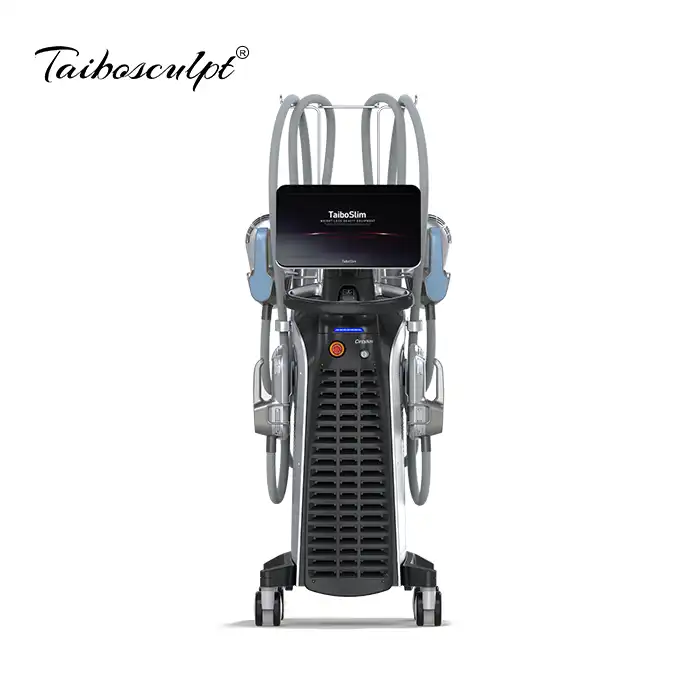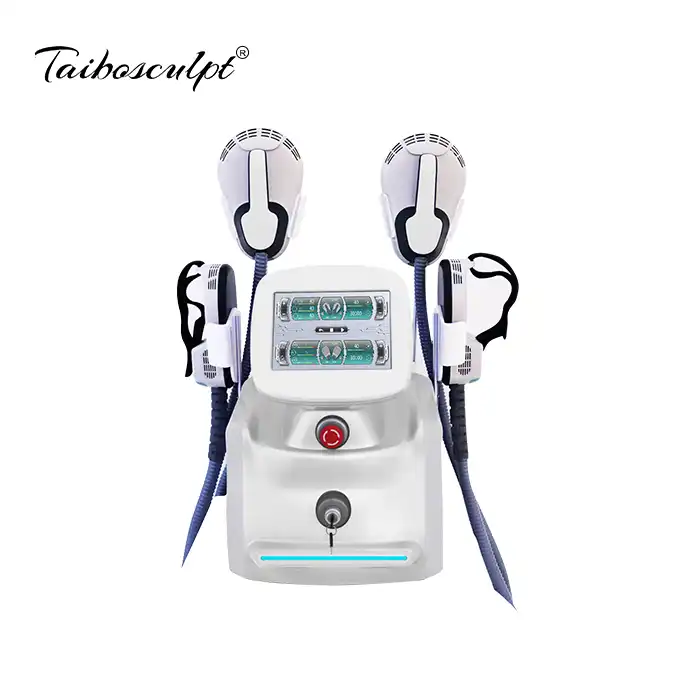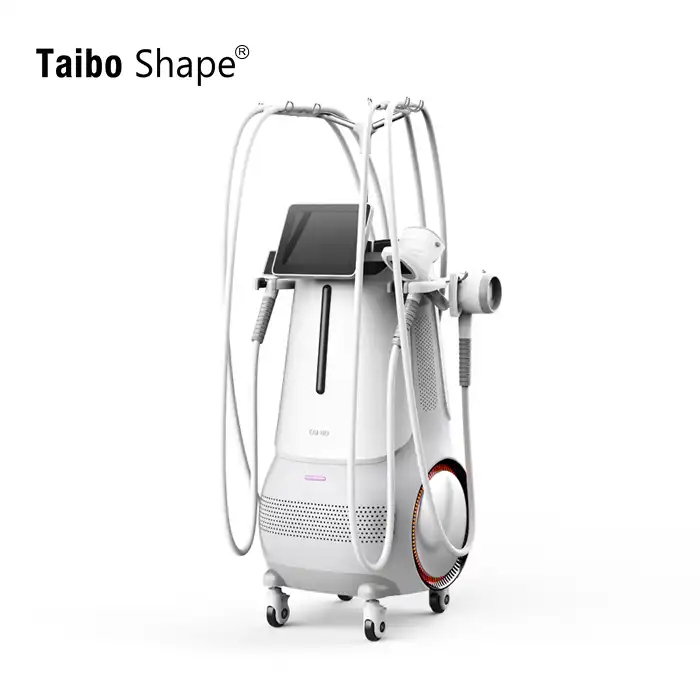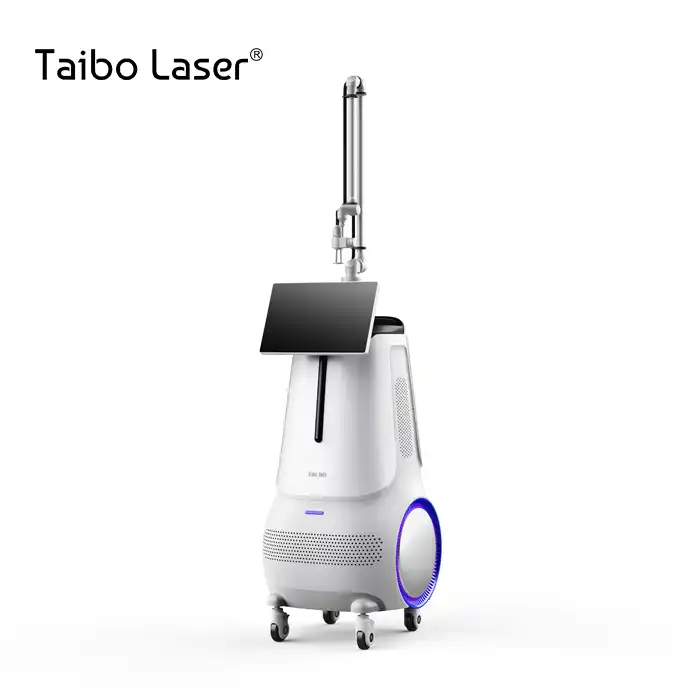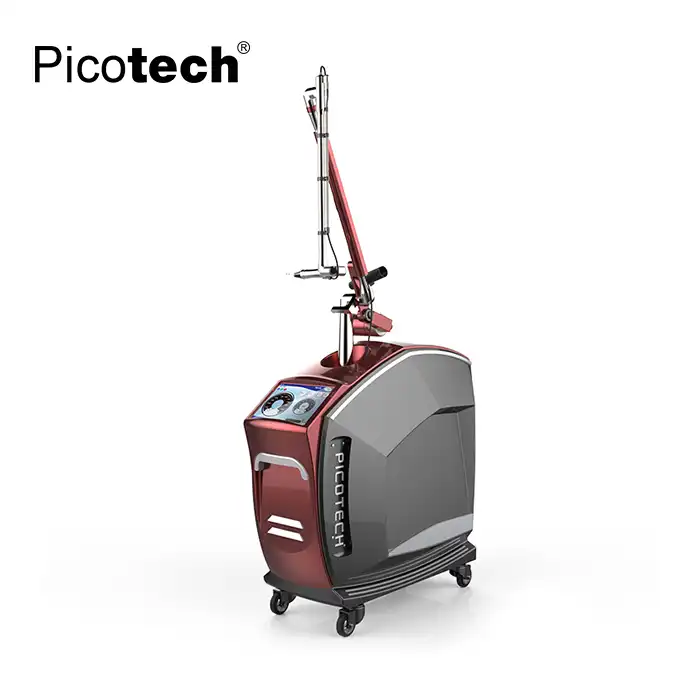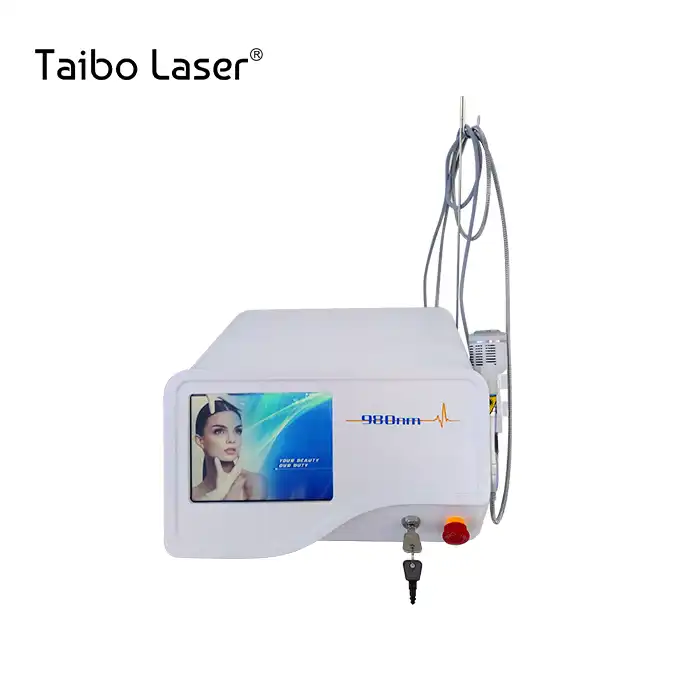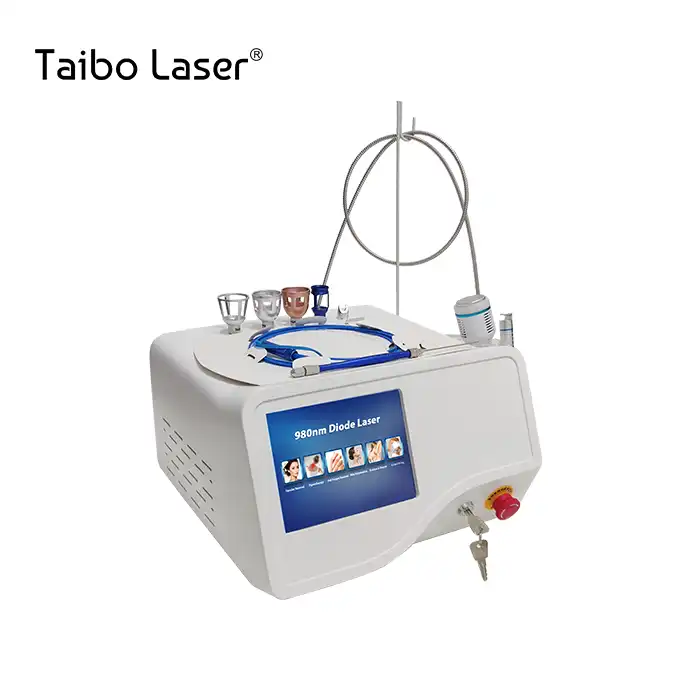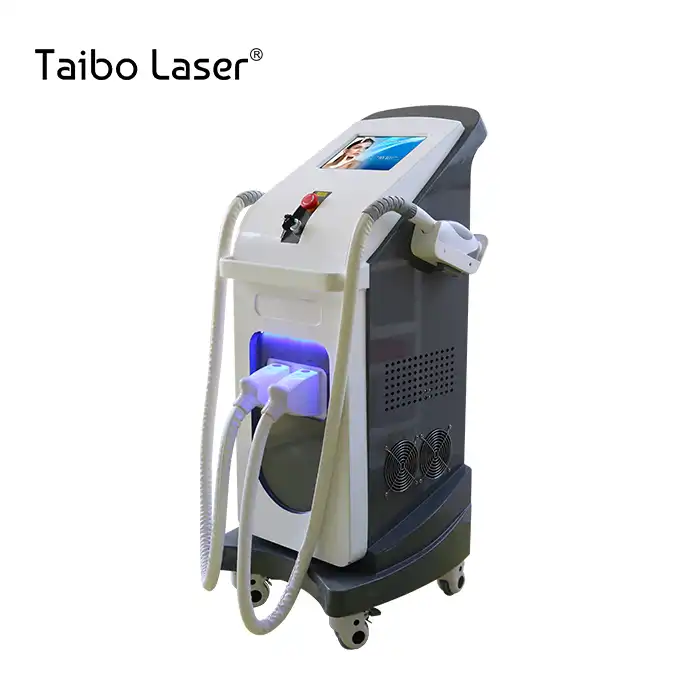
Which Skin Types Are Safe for Diode Laser Hair Removal Machine?
2025-08-20 09:00:04
When considering laser hair removal treatments, understanding which skin types can safely undergo diode laser procedures is crucial for both practitioners and clients. The diode laser Hair Removal Machine has revolutionized the beauty industry by offering effective, long-lasting hair reduction across various skin tones and types. Modern diode laser technology, particularly systems operating at 755nm, 808nm, and 1064nm wavelengths, provides unprecedented versatility in treating diverse patient populations. These advanced systems can safely address hair removal needs for individuals with Fitzpatrick skin types I through VI, making them an invaluable asset for beauty salons, dermatology clinics, and cosmetic centers worldwide. Understanding the safety parameters and appropriate applications for each skin type ensures optimal treatment outcomes while minimizing potential risks and complications.
Understanding Fitzpatrick Skin Types and Laser Compatibility
Light Skin Types (Fitzpatrick I-III) and Diode Laser Safety
Individuals with Fitzpatrick skin types I through III typically have fair to light brown complexions with minimal melanin content in their epidermis. These skin types respond exceptionally well to diode laser hair removal machine treatments, particularly those utilizing 755nm and 808nm wavelengths. The lower melanin concentration in lighter skin types creates an ideal contrast between the hair follicle melanin and surrounding tissue, allowing for precise targeting without significant epidermal absorption. The 755nm Alexandrite wavelength proves most effective for these skin types due to its high melanin absorption coefficient and excellent selectivity for hair follicles. Practitioners using diode laser hair removal machine systems on these skin types can typically employ higher energy densities, ranging from 12-25 J/cm², while maintaining optimal safety margins. The advanced cooling systems incorporated in modern diode laser hair removal machine units, including TEC cooling and sapphire contact cooling, provide additional protection against thermal injury. Clinical studies consistently demonstrate that individuals with lighter skin types experience faster treatment times, require fewer sessions, and achieve higher clearance rates when treated with appropriate diode laser hair removal machine protocols.
Medium Skin Tones and Treatment Considerations
Fitzpatrick skin types III-IV represent a transitional category that requires careful consideration when selecting diode laser hair removal machine parameters. These individuals possess moderate melanin levels that necessitate a balanced approach between efficacy and safety. The 808nm wavelength emerges as the gold standard for these skin types, offering optimal penetration depth while maintaining reasonable melanin selectivity. Diode laser hair removal machine systems equipped with advanced cooling technology become particularly important for medium skin tones, as the increased epidermal melanin content elevates the risk of thermal injury. Treatment protocols for these skin types typically involve moderate energy densities ranging from 8-18 J/cm², with longer pulse durations to allow adequate thermal relaxation time. The multi-wavelength capability of modern diode laser hair removal machine systems provides practitioners with flexibility to adjust treatment parameters based on individual patient characteristics. Proper pre-treatment assessment, including detailed skin type evaluation and patch testing, ensures safe and effective outcomes. Additionally, post-treatment care protocols become increasingly important for medium skin tones to prevent post-inflammatory hyperpigmentation and ensure optimal healing. The combination of appropriate wavelength selection, conservative energy settings, and comprehensive cooling systems makes diode laser hair removal machine treatments both safe and effective for this demographic.
Safety Protocols for All Skin Type Variations
Comprehensive safety protocols form the foundation of successful diode laser hair removal machine treatments across all skin types. Pre-treatment evaluation must include thorough medical history assessment, current medication review, and detailed skin type classification using standardized Fitzpatrick criteria. Modern diode laser hair removal machine systems incorporate multiple safety features, including real-time skin temperature monitoring, automatic energy adjustment capabilities, and emergency stop functions. Practitioners must maintain strict adherence to treatment protocols, including appropriate energy density selection, pulse duration optimization, and cooling system utilization. The advanced diode laser hair removal machine technology available today includes sophisticated skin sensors that can automatically detect skin type variations and recommend appropriate treatment parameters. Regular calibration and maintenance of diode laser hair removal machine systems ensure consistent performance and optimal safety margins. Post-treatment monitoring protocols should include immediate assessment for adverse reactions, appropriate wound care instructions, and scheduled follow-up appointments to evaluate treatment response and identify potential complications. Continuing education for practitioners operating diode laser hair removal machine systems remains essential to maintain current knowledge of safety protocols, emerging techniques, and technological advances in the field.
Wavelength Selection for Different Skin Types
755nm Alexandrite Wavelength for Fair Complexions
The 755nm wavelength represents the optimal choice for individuals with Fitzpatrick skin types I through III when using diode laser hair removal machine systems. This wavelength demonstrates superior melanin absorption characteristics, making it highly effective for targeting hair follicles in fair-skinned individuals while minimizing epidermal heating. Clinical research consistently shows that diode laser hair removal machine systems operating at 755nm achieve higher hair reduction percentages in fewer treatment sessions compared to longer wavelengths in light skin types. The shorter wavelength penetrates to the appropriate follicular depth while maintaining excellent selectivity for hair shaft melanin over epidermal melanin. Modern diode laser hair removal machine technology incorporating 755nm wavelengths typically features adjustable pulse durations ranging from 5-40 milliseconds, allowing practitioners to optimize treatment parameters for individual hair characteristics. The combination of high melanin absorption and moderate tissue penetration makes 755nm ideal for treating fine to medium hair densities commonly found in fair-skinned individuals. Advanced cooling systems integrated into diode laser hair removal machine units become particularly effective at this wavelength, as the reduced thermal diffusion allows for more precise temperature control. Treatment protocols using 755nm diode laser hair removal machine systems typically involve higher energy densities while maintaining excellent safety profiles, resulting in superior patient satisfaction and clinical outcomes.
808nm Gold Standard for Universal Application
The 808nm wavelength has earned recognition as the gold standard in diode laser hair removal machine technology due to its versatility across diverse skin types and hair characteristics. This wavelength strikes an optimal balance between melanin absorption and tissue penetration, making it suitable for Fitzpatrick skin types II through V with appropriate parameter adjustments. Diode laser hair removal machine systems utilizing 808nm technology demonstrate consistent performance across varying hair colors, textures, and densities while maintaining excellent safety profiles. The moderate melanin absorption coefficient of 808nm wavelengths allows for effective follicular targeting without excessive epidermal heating, particularly important when treating individuals with higher melanin content. Clinical studies indicate that diode laser hair removal machine treatments at 808nm wavelengths achieve optimal results with minimal discomfort and reduced risk of pigmentary changes. The deeper tissue penetration characteristics of 808nm wavelengths make them particularly effective for treating coarse, deeply rooted hair follicles commonly found in body areas such as legs, back, and bikini regions. Modern diode laser hair removal machine systems incorporating 808nm technology feature sophisticated pulse shaping capabilities, allowing practitioners to customize treatment delivery for optimal results. The universal applicability of 808nm diode laser hair removal machine systems makes them an excellent investment for practices treating diverse patient populations with varying skin types and hair characteristics.
1064nm Nd:YAG for Darker Skin Tones
The 1064nm wavelength represents the safest option for treating individuals with Fitzpatrick skin types IV through VI using diode laser hair removal machine technology. This longer wavelength demonstrates reduced melanin absorption compared to shorter wavelengths, significantly decreasing the risk of epidermal injury in darker-skinned individuals. Diode laser hair removal machine systems operating at 1064nm wavelengths can safely treat even deeply pigmented skin tones, including those with recent sun exposure or natural tanning. The deeper tissue penetration characteristics of 1064nm wavelengths ensure adequate energy delivery to hair follicles while bypassing much of the epidermal melanin content. Clinical experience with 1064nm diode laser hair removal machine treatments demonstrates excellent safety profiles in darker skin types, with minimal risk of post-inflammatory hyperpigmentation or hypopigmentation. Treatment protocols using 1064nm diode laser hair removal machine systems typically involve longer pulse durations and moderate energy densities to achieve optimal hair reduction while maintaining safety. The reduced melanin absorption at this wavelength necessitates higher energy levels and more treatment sessions compared to shorter wavelengths, but the improved safety profile justifies this approach. Advanced cooling systems become particularly important when using 1064nm diode laser hair removal machine technology, as the higher energy requirements increase the potential for thermal buildup. The availability of 1064nm wavelengths in modern diode laser hair removal machine systems ensures that practitioners can safely and effectively treat patients across the entire spectrum of skin types.
Advanced Safety Features and Risk Management
Integrated Cooling Systems and Temperature Control
Modern diode laser hair removal machine systems incorporate sophisticated cooling technologies designed to maximize patient comfort and safety across all skin types. The multi-modal cooling approach typically includes TEC (thermoelectric cooling), sapphire contact cooling, forced air circulation, and water circulation systems working in synergy. These advanced cooling mechanisms in diode laser hair removal machine units maintain optimal skin surface temperatures throughout treatment procedures, reducing the risk of thermal injury and improving patient tolerance. The sapphire contact cooling feature provides immediate heat extraction from the treatment area, while TEC cooling maintains consistent cooling plate temperatures regardless of ambient conditions. Clinical studies demonstrate that diode laser hair removal machine systems with advanced cooling technology can safely deliver higher energy densities while maintaining patient comfort levels. The automatic temperature monitoring capabilities integrated into modern diode laser hair removal machine systems provide real-time feedback on skin surface temperatures, allowing practitioners to adjust parameters dynamically during treatment. The combination of multiple cooling modalities ensures effective heat management even during extended treatment sessions or when treating large body areas. Pre-cooling, during-treatment cooling, and post-cooling phases work together to minimize thermal stress on treated tissues. The reliability and consistency of cooling systems in diode laser hair removal machine technology directly correlate with treatment safety and patient satisfaction across all skin types.
Real-Time Skin Monitoring and Parameter Adjustment
Contemporary diode laser hair removal machine systems feature advanced skin monitoring capabilities that continuously assess treatment parameters and skin response throughout procedures. These intelligent monitoring systems utilize optical sensors, thermal imaging, and impedance measurements to evaluate skin characteristics and treatment response in real-time. The integration of artificial intelligence algorithms in modern diode laser hair removal machine technology enables automatic parameter optimization based on individual skin type variations and treatment response patterns. Practitioners benefit from immediate feedback regarding energy absorption, skin temperature changes, and optimal treatment timing when using advanced diode laser hair removal machine systems. The predictive capabilities of modern monitoring systems help prevent overtreatment and reduce the risk of adverse reactions across all skin types. Real-time adjustment features allow diode laser hair removal machine systems to modify energy delivery, pulse duration, and cooling parameters automatically based on detected skin responses. The sophisticated feedback mechanisms incorporated into contemporary diode laser hair removal machine technology ensure consistent treatment quality regardless of operator experience level. Advanced safety protocols include automatic treatment suspension when predetermined safety thresholds are exceeded, providing additional protection for patients with sensitive or reactive skin types. The continuous evolution of monitoring technology in diode laser hair removal machine systems represents a significant advancement in treatment safety and efficacy optimization.
Pre-Treatment Assessment and Risk Stratification
Comprehensive pre-treatment evaluation forms the cornerstone of safe diode laser hair removal machine procedures across all skin types and patient demographics. Systematic assessment protocols include detailed medical history review, current medication analysis, previous cosmetic treatment evaluation, and thorough skin type classification using standardized criteria. Modern diode laser hair removal machine systems benefit from structured assessment algorithms that help practitioners identify potential risk factors and contraindications before treatment initiation. The evaluation process should include photographic documentation, patch testing protocols, and realistic expectation setting to ensure optimal treatment outcomes. Specialized assessment tools integrated into advanced diode laser hair removal machine systems provide guided evaluation workflows that enhance consistency and thoroughness of pre-treatment evaluations. Risk stratification protocols help practitioners identify patients who may require modified treatment approaches, extended cooling periods, or alternative wavelength selections. The importance of pre-treatment assessment becomes particularly critical when treating individuals with darker skin types, recent sun exposure, or history of keloid formation. Comprehensive documentation of assessment findings provides legal protection and enables consistent treatment approaches across multiple sessions. The investment in thorough pre-treatment evaluation significantly reduces the likelihood of adverse events and improves overall patient satisfaction with diode laser hair removal machine treatments. Advanced practitioner training in assessment techniques ensures optimal utilization of sophisticated diode laser hair removal machine technology while maintaining the highest safety standards.
Conclusion
The versatility and safety of modern diode laser hair removal machine technology have transformed hair removal treatments across all skin types. With proper wavelength selection, appropriate parameter settings, and comprehensive safety protocols, practitioners can confidently treat patients from Fitzpatrick skin types I through VI. The advanced cooling systems, real-time monitoring capabilities, and multi-wavelength options available in contemporary systems ensure optimal outcomes while minimizing risks. As technology continues to evolve, diode laser hair removal machine systems become increasingly sophisticated and user-friendly.
At Xi'an Taibo Laser Beauty Company, we bring over 15 years of manufacturing excellence to the beauty equipment industry, specializing in professional-grade diode laser hair removal machine systems. Our commitment to quality, innovation, and customer satisfaction has established us as leading diode laser hair removal machine manufacturers in China. Whether you're seeking reliable diode laser hair removal machine suppliers, exploring diode laser hair removal machine for sale options, or comparing diode laser hair removal machine price points, our experienced team provides comprehensive support. We serve as trusted diode laser hair removal machine factory partners, offering customization services, technical training, and worldwide shipping. Our two-year warranty, 24-hour customer service, and professional after-sales support ensure your investment delivers lasting value. Contact us today at susan@taibobeauty.com to discover how our advanced diode laser hair removal machine technology can enhance your practice and exceed your clients' expectations. Experience the difference that comes from partnering with industry-leading China diode laser hair removal machine specialists dedicated to your success.
References
1. Anderson, R.R., Parrish, J.A. "Selective photothermolysis: precise microsurgery by selective absorption of pulsed radiation." Journal of Dermatologic Surgery & Oncology, 1983.
2. Grossman, M.C., Dierickx, C., Farinelli, W., Flotte, T., Anderson, R.R. "Damage to hair follicles by normal-mode ruby laser pulses." American Academy of Dermatology, 1996.
3. Lanigan, S.W., Sheehan-Dare, R. "Laser hair removal: a review and report on the use of the long-pulsed alexandrite laser for hair reduction of the upper lip, leg, back, and bikini line." Journal of Cosmetic Dermatology, 2004.
4. Ibrahimi, O.A., Avram, M.M., Hanke, C.W., Kilmer, S.L., Anderson, R.R. "Laser hair removal." Dermatologic Therapy, 2011.
YOU MAY LIKE













